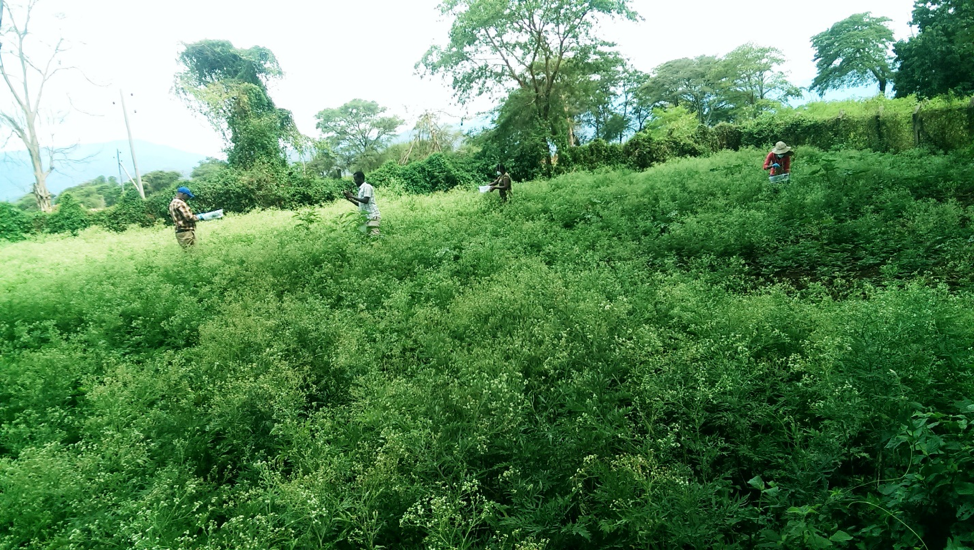International Programs
Parthenium (Parthenium hysterophorus L.)
Parthenium (Parthenium hysterophorus L.), a native plant of tropical and sub-tropical America, adversely affects food security, biodiversity, and the health of both humans and livestock in eastern and southern Africa. Parthenium reduces the yield of many major crops such as teff, sorghum, and corn; it competes with preferred pasture species; and, when consumed by domestic animals, it taints their milk and meat, thereby reducing their value. Parthenium also affects human health, causing or aggravating skin and respiratory diseases. In addition, because of its ability to release toxic chemicals, parthenium can inhibit the emergence of other plant species, thereby adversely affecting plant biodiversity in areas it invades.
From 2005 to 2014, the U.S. Agency for International Development (USAID), through the Integrated Pest Management Collaborative Research Support Program housed at Virginia Tech, awarded grants to VSU to develop an integrated management system to abate the spread of parthenium in southern and eastern Africa. The first two phases of the project focused on: completing a detailed survey of parthenium in eastern and southern Africa, and on; setting up Ethiopia’s first biocontrol quarantine facility at Ambo to evaluate the safety of natural enemies of parthenium to Ethiopia’s food crops and native plants. Virginia State University was awarded another competitive grant of $748,465 by USAID in 2015 or to release the tested a third phase of work on parthenium in East Africa. In the new grant, scientists from six countries collaborated to implement a biological control program against parthenium in Ethiopia, Kenya, Tanzania, and Uganda.
Dr. Wondi Mersie in a parthenium-infested field at Arba Minch, Ethiopia.
Parthenium-infested field at Arba Minch at time of the beetle release on September 15, 2018
The above parthenium-infested field at Arba Minch one year after the release of the beetle on September 27, 2019. Defoliated and dried parthenium is seen standing.
Parthenium in a field at the time of the weevil release on December 7, 2017.
The above field on October 8, 2021 with reemerged grass and few parthenium plants.
The two natural enemies of parthenium that were introduced and evaluated in Ethiopia were the leaf-feeding beetle Zygogramma bicolorata and the stem-boring weevil, Listronotus setosipennis. After the data showed that both natural enemies were safe, the Ethiopian government granted permits to release both agents in the field.
Since then both the beetle and the weevil have been mass-reared and released in many parts of Ethiopia where parthenium is a problem. These areas include Finote Selam in Gojam Zone and eastern Wollo in the Amhara Region, central and eastern Oromia and around Arba Minch in the Southern Region.
At several fields around Arba Minch, the beetle has started to cause significant damage to parthenium. Insufficient numbers, the adult and the larva of the beetle can completely defoliate parthenium as shown below. The defoliation will weaken the weed thereby allowing other plants to compete with it. In many pasturelands when the beetle severely damages parthenium, the grass will reemerge and replace the weed. This restores the land for grazing by livestock.
The second natural enemy introduced to Ethiopia for parthenium control, the stem boring weevil (Listronotus setosipennis) is also established in Mojo, central Ethiopia after its release in 2017. The adult weevil lays its eggs on the flower of parthenium and the hatched larva then tunnels through the inflorence to the stem. Four to five larvae feeding inside the stem can kill a parthenium plant. As shown below in a field in Mojo the weevil four years after its release has damaged parthenium plants allowing the grass to remerge.





